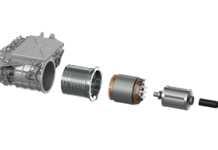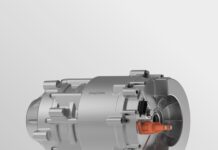Vitesco Technologies, a prominent international manufacturer specializing in advanced drive technologies and electrification solutions, is showcasing their innovative Rotor Lock Actuator at the SIA POWERTRAIN event in Lille, France, on June 19-20, 2024. This cutting-edge module for electric vehicles integrates three essential functions: a park lock, precise rotor position sensing, and optionally, a brush system for externally excited synchronous machines (EESM). This multifunctional approach significantly reduces complexity, saves packaging space on the e-axle, and lowers costs for customers. Traditionally, electric vehicles use a mechanical park lock in the reducer gearbox, occupying significant space. However, Vitesco’s new rotor lock concept relocates the park lock functionality to the rotor shaft, streamlining and economizing the system design.
The Rotor Lock Actuator’s end-of-shaft position on the rotor allows for a smaller, easily integrable actuator within the vehicle’s drive, enhancing mechatronic integration and minimizing required space. This new configuration enables additional functions like the brush system for EESM and an inductive Rotor Position Sensor, which eliminates the need for separate control units, sensors, and harnesses, thus further reducing costs. With sensing redundancy, robust cyber security measures, and advanced internal diagnostics, the module ensures functional reliability and safety. Driven by a 12 V DC motor, the actuator can be seamlessly integrated into the drivetrain and communication networks, facilitating easy installation. The inductive Rotor Position Sensor improves motor commutation control, enhancing vehicle range, while the lock system improves parking safety by minimizing vehicle movements and preventing accidental engagement during driving. The lock is efficiently activated and deactivated in under 250 milliseconds.







